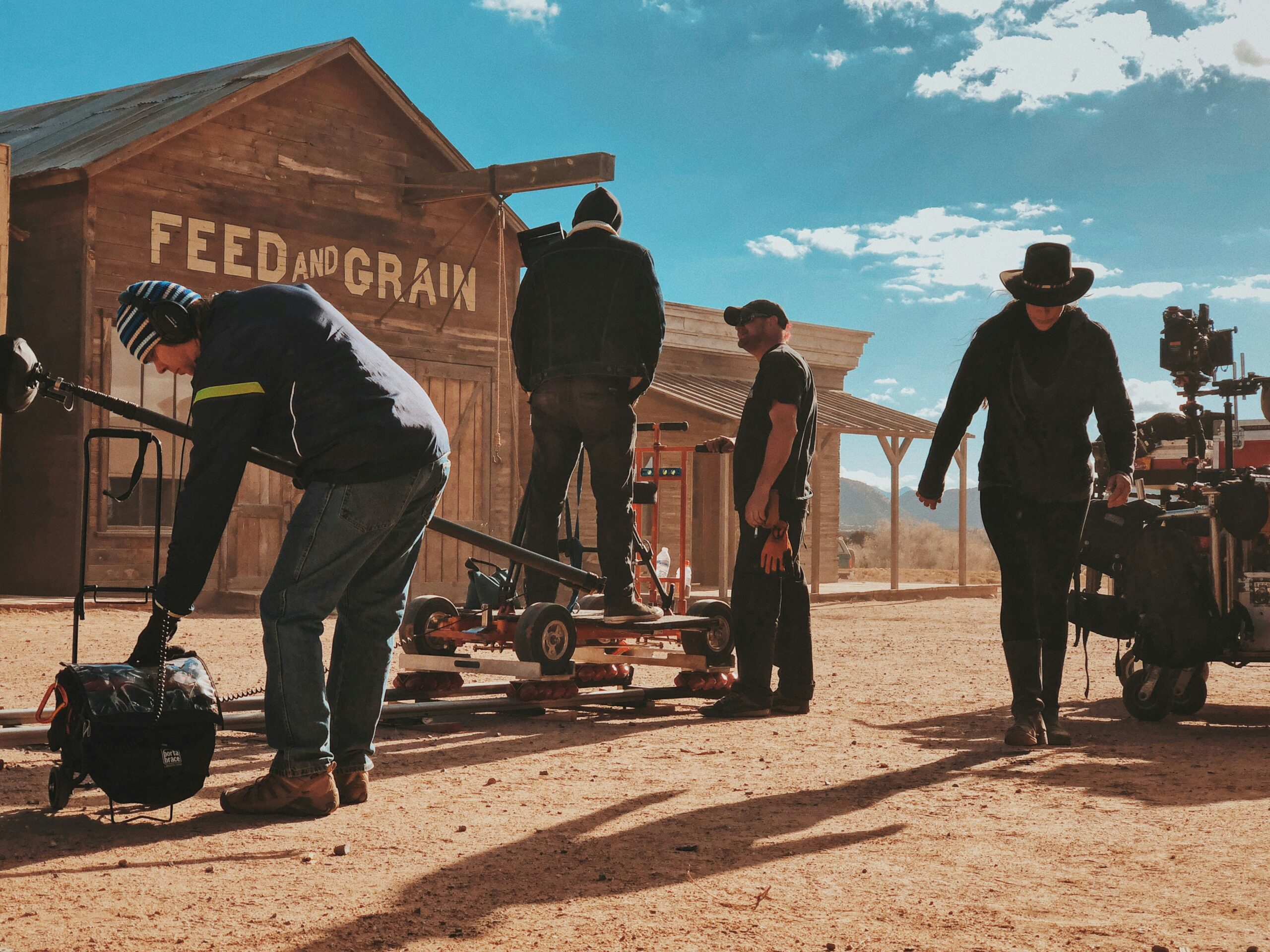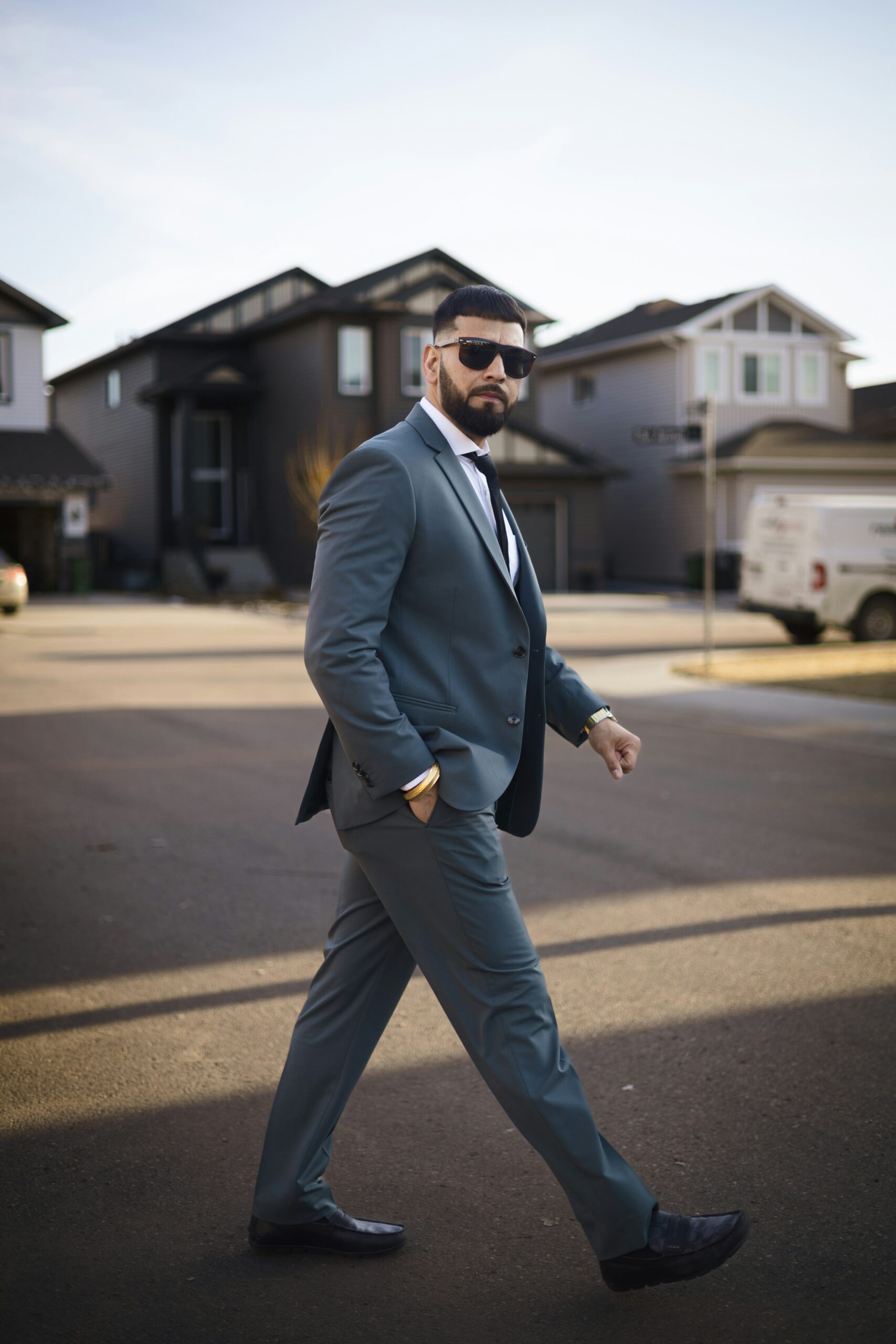Introduction: The Controversy
The recent release of a Netflix film featuring Jessica Alba has ignited a significant controversy, drawing widespread backlash and accusations of racism. The film has come under fire for its portrayal of Arabs as terrorists, a depiction that many have found deeply offensive and harmful. At the heart of the controversy is the representation of Arab characters who are consistently shown wearing keffiyehs, a traditional Middle Eastern headdress, which has been problematically linked to terrorist activities within the film’s narrative.
Critics argue that this portrayal perpetuates harmful stereotypes and contributes to the negative and unjustified biases against Arab communities. The keffiyeh, which holds cultural and historical significance, is being misused as a symbol of terrorism, thereby reinforcing prejudiced tropes. This has led to an outcry from various groups, including cultural organizations and community leaders, who have condemned the film for its insensitive and damaging representation.
The immediate reactions from audiences and advocacy groups have been swift and strong. Social media platforms have been flooded with posts and comments calling out the film’s racist undertones. Hashtags condemning the film have trended, and petitions demanding its removal from the streaming service have garnered thousands of signatures. Prominent figures within the Arab community and beyond have voiced their concerns, emphasizing the need for more responsible and authentic portrayals in mainstream media.
As the controversy continues to unfold, it has sparked a broader conversation about the impact of media representations on public perceptions and the importance of cultural sensitivity in filmmaking. The film’s depiction of Arabs in such a negative light not only misrepresents a diverse and rich culture but also fuels existing prejudices that can have real-world consequences. This introduction sets the stage for an in-depth exploration of the issues at hand and the broader implications of such portrayals in contemporary media.
Background of the Film
The film at the center of the controversy is a recent release on Netflix, starring Jessica Alba. The plot revolves around a high-stakes narrative where the protagonist, played by Alba, finds herself entangled in a web of international espionage and terrorism. The main characters include Alba’s character, an undercover agent, and a series of antagonists who are depicted as Arab terrorists, often shown wearing keffiyehs. This stereotypical portrayal has sparked significant backlash from viewers and critics alike.
The film was directed by a well-known filmmaker with a history of producing action-packed thrillers. The production company behind the film is a prominent player in the industry, known for its blockbuster releases. Previous works by the director and the production house have often flirted with controversial themes, but none have attracted the level of outrage witnessed with this particular release.
The context of the film’s production is also worth noting. It was filmed during a time when global tensions related to terrorism and international relations were particularly high. This backdrop may have influenced the filmmakers’ decision to incorporate such themes into the storyline. The use of Jessica Alba, a high-profile actress, was likely intended to draw a wide audience, given her broad appeal and established fan base.
Understanding the background of the film, including its plot, characters, and the context of its production, is crucial for comprehending the foundation of the controversy. The portrayal of Arabs as terrorists in keffiyehs has been a particularly sensitive issue, reflecting broader societal and cultural implications that have resonated profoundly with audiences worldwide.
Depiction of Arabs in the Film
The portrayal of Arabs in the controversial Jessica Alba film on Netflix has sparked significant backlash due to its stereotypical and offensive depictions. Central to the criticism is the film’s characterization of Arab characters, who are predominantly cast as terrorists. This reductive representation not only reinforces harmful stereotypes but also perpetuates a narrow and negative perception of Arab individuals.
A critical element that has been especially contentious is the use of keffiyehs, a traditional Arab headdress, which the film employs as a visual shorthand for its antagonists. This choice has been seen as a lazy and insensitive stereotype, equating the cultural symbol with terrorism. Such a portrayal disregards the rich and diverse heritage associated with the keffiyeh, reducing it to a mere emblem of fear and violence in the eyes of the audience.
Key scenes further exacerbate these problematic portrayals. For instance, in one pivotal moment, a group of Arab men clad in keffiyehs are depicted plotting an attack, complete with ominous music and dim lighting to underscore their menace. This scene, among others, fails to offer any nuanced or balanced perspective, instead opting for a one-dimensional depiction that fuels xenophobic sentiments. The lack of complexity in these characters suggests a deliberate intent to vilify rather than humanize, contributing to a skewed representation that aligns with long-standing prejudices.
Additionally, the film’s narrative arc does little to challenge these stereotypes. The Arab characters are not given backstories or motivations beyond their roles as villains, which strips them of individuality and depth. This absence of nuanced storytelling reinforces the damaging idea that Arabs are inherently violent and untrustworthy. The film’s reliance on these tropes not only disrespects the Arab community but also undermines efforts towards cultural understanding and empathy.
Public Reaction and Outrage
The release of Netflix’s film featuring Jessica Alba has sparked significant public outrage, particularly concerning the portrayal of Arabs as terrorists donning keffiyehs. Social media platforms erupted with indignation, as users voiced their discontent and dismay over what they perceived as a perpetuation of harmful stereotypes. Twitter, in particular, became a hotbed of activity, with hashtags like #CancelNetflix and #StopRacistFilms trending globally.
One tweet that garnered substantial attention read, “It’s 2023, and we’re still seeing Arabs depicted as terrorists. Do better, @Netflix.” The sentiment was echoed across numerous posts, highlighting a widespread frustration with the film’s narrative choices. Another user commented, “The keffiyeh is a symbol of our culture and resistance, not terrorism. This portrayal is offensive and dangerous.” Such posts underscore the deep-seated anger and hurt felt by many within the Arab community and their allies.
In addition to individual reactions, several advocacy groups have issued statements condemning the film. The Arab-American Anti-Discrimination Committee (ADC) released a statement calling the portrayal “deeply troubling” and urging Netflix to reconsider its content strategies. Similarly, the Council on American-Islamic Relations (CAIR) demanded an apology and the immediate removal of the film, citing its potential to incite further discrimination and violence against Arabs and Muslims.
The backlash has also spurred organized campaigns aimed at holding Netflix accountable. Petitions on platforms like Change.org have quickly amassed thousands of signatures, demanding that the streaming giant take corrective action. These campaigns often emphasize the broader implications of such portrayals, arguing that media representations play a crucial role in shaping public perceptions and attitudes.
Overall, the public reaction to the film has been overwhelmingly negative, with a clear call to action for more responsible and respectful storytelling. The outrage serves as a potent reminder of the power of media and the importance of cultural sensitivity in filmmaking.
Responses from Netflix and Filmmakers
In light of the backlash surrounding the portrayal of Arabs as terrorists in keffiyehs in Netflix’s recent Jessica Alba film, both Netflix and the filmmakers have issued statements to address the accusations of racism. Netflix was among the first to respond, emphasizing their commitment to diversity and inclusion. A spokesperson from the platform stated, “We take these concerns very seriously and are actively working to ensure that our content reflects diverse perspectives and does not perpetuate harmful stereotypes.”
The filmmakers also weighed in, offering a more detailed defense of their creative choices. The director of the film explained, “Our intention was never to offend or misrepresent any culture. The characters’ attire was meant to be a plot device, not a cultural statement. We regret any misunderstanding this has caused.” Jessica Alba herself took to social media to express her dismay over the controversy, stating, “As an actor, I trust the vision of the filmmakers, but I am deeply sorry if this film has hurt anyone.”
Despite these responses, the public and media reactions have been mixed. Some viewers appreciated the quick acknowledgment and apologies, viewing them as a step in the right direction. However, others felt that the responses were insufficient and failed to address the deeper issues of systemic racism and cultural insensitivity in media. Critics argue that merely apologizing without taking concrete steps to prevent future occurrences does little to solve the problem.
On social media platforms and various news outlets, the effectiveness of these responses has been hotly debated. While some believe that Netflix and the filmmakers have taken responsibility, others call for more significant action, such as the removal of the film from the platform or a more substantial commitment to hiring culturally competent consultants. The controversy continues to spark discussions about representation and the responsibilities of content creators in portraying different cultures.
Historical Context of Arab Representation in Media
The portrayal of Arabs in Western media has long been fraught with controversy and stereotyping. Historically, Arab characters have frequently been depicted in roles that reinforce negative stereotypes, often portraying them as villains, terrorists, or exotic others. These representations can be traced back to early Hollywood films, where Arabs were often cast as antagonists in adventure and action genres. Such portrayals have not only perpetuated harmful stereotypes but have also influenced public perception, fostering a distorted and often negative view of Arab communities.
One notable example is the wave of films and television shows that emerged in the wake of geopolitical events, such as the Iran hostage crisis and the Gulf Wars. During these periods, media content frequently depicted Arabs as dangerous and untrustworthy, contributing to a climate of suspicion and prejudice. These portrayals were not limited to the action genre; they also appeared in comedies and dramas, where Arab characters were often reduced to one-dimensional caricatures.
The impact of these portrayals on the Arab community cannot be understated. Negative stereotypes in media have contributed to widespread misconceptions and biases, affecting the way Arabs are perceived and treated in real life. This has led to increased instances of discrimination and social exclusion, further marginalizing an already underrepresented group.
In recent years, there have been concerted efforts to combat these stereotypes and promote more accurate and respectful representations of Arabs in media. Advocacy groups, filmmakers, and scholars have called for more nuanced and diverse portrayals that reflect the complexity and richness of Arab cultures. Initiatives such as the Media Action Network for Arab Americans (MANAA) have been instrumental in challenging harmful depictions and advocating for more balanced representation.
While progress has been made, the recent controversy surrounding Netflix’s Jessica Alba film highlights the ongoing challenges in achieving fair and accurate representation. It underscores the need for continued vigilance and advocacy to ensure that media portrayals do not perpetuate harmful stereotypes but rather contribute to a more informed and inclusive society.
Impact on Arab and Muslim Communities
The release of Netflix’s controversial Jessica Alba film has sparked significant outrage within Arab and Muslim communities worldwide. The film’s portrayal of Arabs as terrorists donning keffiyehs has been criticized for perpetuating harmful stereotypes that have long plagued these communities. This negative representation has not only elicited emotional distress but has also had profound social and psychological implications.
Community leaders and activists have voiced strong concerns about the film’s impact. “Such portrayals contribute to a climate of fear and misunderstanding,” states Dr. Ahmed Al-Mansour, a prominent advocate for Arab rights. “They reinforce dangerous stereotypes that can lead to discrimination and even violence against Arab and Muslim individuals.” The perpetuation of these images in popular media continues to fuel Islamophobia, making it harder for these communities to dismantle prejudiced views and achieve greater acceptance in society.
Everyday individuals within these communities have also expressed their dismay. Amina Khalid, a university student, describes feeling alienated and misrepresented. “Seeing my culture depicted in such a negative light is disheartening. It makes me feel invisible and reduces my rich heritage to a harmful stereotype.” This sentiment is echoed by many who feel that the film undermines the complexity and diversity of Arab and Muslim identities, reducing them to monolithic caricatures.
Psychologically, the impact of such negative representations can be significant. Studies have shown that constant exposure to negative stereotypes can lead to internalized racism, where individuals begin to subconsciously accept these harmful images as reflective of their own identity. This can result in diminished self-esteem and a fractured sense of belonging.
Moreover, social interactions can become strained as a result of these stereotypes. People from Arab and Muslim backgrounds may face increased scrutiny, suspicion, and hostility in their daily lives. This can lead to social isolation and a reluctance to engage in broader societal activities, further marginalizing these communities.
The outrage over the film is not just about a single movie but is indicative of a larger issue within the media industry. It underscores the urgent need for more accurate, nuanced, and respectful representations of all cultures to foster a more inclusive and understanding society.
Moving Forward: Addressing Stereotypes in Media
The perpetuation of harmful stereotypes in media is an issue that requires a multifaceted approach to address effectively. Filmmakers, production companies, and streaming platforms such as Netflix have a significant role to play in ensuring that their content does not perpetuate negative and simplistic portrayals of any ethnic or cultural group. One of the first steps towards this goal is the inclusion of diverse voices in the storytelling process. By hiring writers, directors, and producers from a variety of backgrounds, the industry can create more authentic and nuanced representations of different communities.
Another critical step is conducting thorough cultural consultations during the development of a project. This involves engaging with cultural experts and community representatives to ensure that the portrayal of any group is accurate and respectful. These consultations can provide valuable insights and prevent the dissemination of harmful stereotypes that can perpetuate prejudice and misunderstanding.
Streaming platforms like Netflix also have the responsibility to curate their content thoughtfully. This includes being vigilant about the potential impact of their programming and taking proactive steps to address any issues that may arise. Implementing a robust review process that involves sensitivity readers and cultural consultants can help identify problematic content before it reaches the audience. Furthermore, platforms should be open to feedback and willing to make necessary changes if their content is found to be offensive or harmful.
Audiences, too, have a powerful role in driving change. By being critical consumers of media, viewers can demand better representation and hold content creators accountable. Engaging in discussions about media portrayals and supporting content that offers diverse and accurate representations can influence industry standards. Social media campaigns and petitions can also be effective tools in voicing concerns and advocating for change.
Ultimately, combating stereotypes in media is a collective effort that requires vigilance, collaboration, and a commitment to diversity and inclusion. By taking these proactive steps, the entertainment industry can move towards a future where media reflects the rich tapestry of human experience without resorting to harmful and reductive stereotypes.



